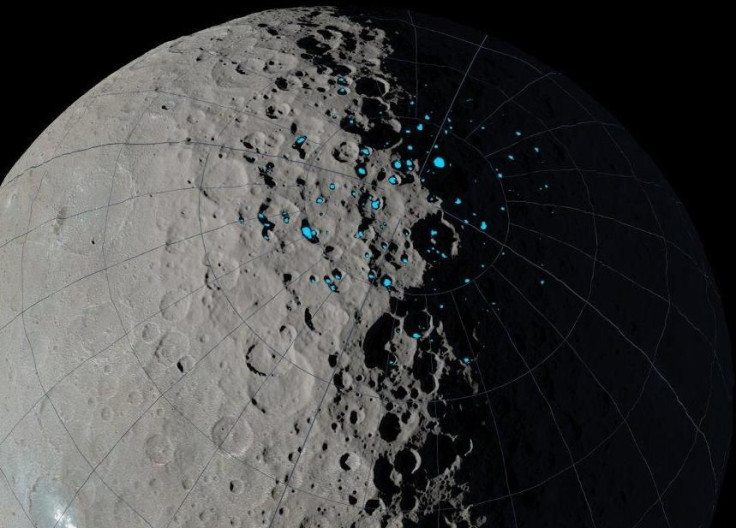Dwarf Planet Ceres Has Regions That Can Entrap Ice For A Billion Years

Dwarf plant Ceres continues to unfold its mysteries. Scientists have now identified that this alien world has permanently shadowed regions, some of which are cold enough to accumulate water for a billion years. The discovery, made with the help of data provided by NASA's Dawn mission, suggests that ice deposits could still exist on the planet.
The permanently shadowed regions, typically located on the crater floor or along a section of the crater wall facing toward the pole, do not receive direct sunlight. With the temperature staying below minus 240 degrees Fahrenheit (minus 151 degrees Celsius), these regions are ideal to trap water ice and remain stable, scientists said.
"The conditions on Ceres are right for accumulating deposits of water ice," Norbert Schorghofer, a Dawn guest investigator at the University of Hawaii at Manoa, said in a statement. "Ceres has just enough mass to hold on to water molecules, and the permanently shadowed regions we identified are extremely cold — colder than most that exist on the moon or Mercury."
As part of the study, published in the journal Geophysical Research Letters on Friday, the researchers studied Ceres' northern hemisphere. They combined images from Dawn's cameras to yield the dwarf planet's shape, revealing its craters, plains and other features in three dimensions. Then, a sophisticated computer model was developed to determine the areas that receive direct sunlight, the amount of solar radiation reaching Ceres’ surface and how the conditions on the dwarf planet change over the course of a year.
According to researchers, the largest among dozens of sizeable permanently shadowed regions on Ceres was inside a 10-mile-wide crater located less than 40 miles from its north pole. Although the planet’s permanently shadowed regions occupy about 695 square miles, it’s just a small fraction of the entire landscape.
Scientists have estimated that about one of every 1,000 water molecules generated on Ceres will end up in a cold trap during a year on Ceres, which equals 1,682 Earth days. This, according to scientists, should be enough to form thin but visible ice deposits over 100,000 years.
"While cold traps may provide surface deposits of water ice as have been seen at the moon and Mercury, Ceres may have been formed with a relatively greater reservoir of water," Chris Russell, principal investigator of the Dawn mission, based at the University of California, Los Angeles, said in the statement.
Ceres, which has an average diameter of 590 miles, was previously predicted to contain a large amount of ice. Some scientists even think that its surface conceals an ocean.
© Copyright IBTimes 2024. All rights reserved.






















